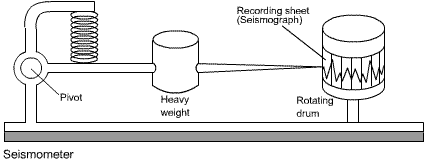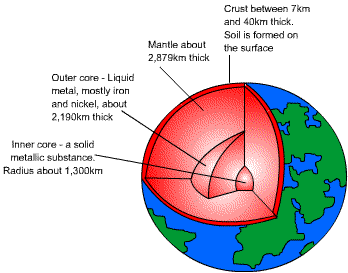Seismic waves
Earthquakes occur deep within the Earth when adjacent tectonic plates slip across one another or past each other.
Seismic waves are shock waves produced from earthquakes.
They travel through the Earth and are detected by instruments called seismometers which record the movements on a special graph called a seismograph.

Earthquakes produce surface waves that can cause damage.
They also produce two types of wave that can travel through the Earth, P waves and S waves.
Earth structure

The Earth is almost spherical and is made up of three main layers.
- A thin crust, which is the part we live on.
- A mantle which extends about halfway to the centre of the Earth. It has all the properties of a solid but it can flow very slowly.
- A core with just over half the Earth’s radius. It is made of nickel and iron, and divided into the outer and inner core. The outer core is liquid and the inner core is solid.
The overall density of the Earth is much greater than the mean densities of the rocks that make up the crust.
This indicates that the inside of the Earth is made up of a different material, which is more dense than that of the crust.
P waves and S waves
Type of wave | Speed of travel | Wave Type | What they travel through |
P Wave | Faster | Longitudinal | Liquids and Solids |
S Wave | Slower | Transverse | Solids only |
The speed of both types of wave increases with depth through the mantel.
The waves travel in curved paths because their speed changes, so they are refracted.
At the boundary between the mantel and the core the wave direction changes abruptly, due to refraction at the boundary between a solid and a liquid.
S waves cannot travel through the core, because they cannot travel through liquids. Therefore they never arrive at areas on the opposite side of the Earth from the source of the seismic waves.
Our knowledge of the layered structure of the Earth
Document Actions

 Like us on Facebook
Like us on Facebook